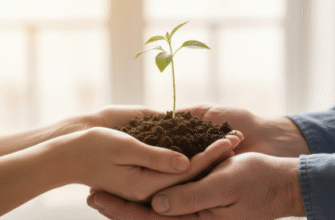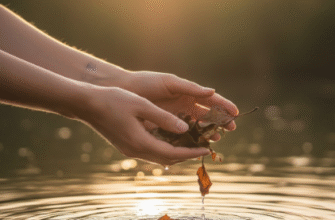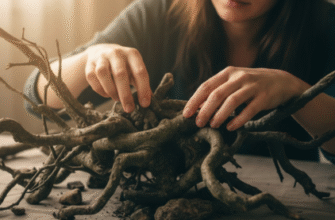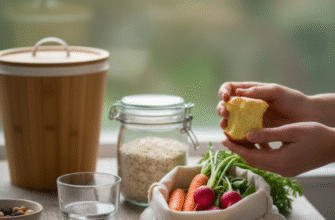Stepping out into the wild, whether it’s a sprawling forest, a neighbourhood park, or even the untamed corners of your own backyard, can feel like entering a hidden world. Beneath your feet and all around you thrives a pantry of potential, a source of sustenance used by humans for millennia: edible wild plants. The idea of foraging, of gathering your own food directly from nature, holds a powerful allure. It connects us to the seasons, encourages observation, and offers the freshest possible flavours. But this rewarding skill comes with a crucial, non-negotiable prerequisite: knowledge and safety must always come first.
Embarking on the journey of learning to identify and gather wild edibles isn’t a casual weekend pursuit you can master from a quick internet search. It’s a skill built on careful study, patience, and a deep respect for the natural world – including its potential dangers. Misidentification can lead to unpleasant experiences at best, and severe illness or worse at worst. This isn’t meant to scare you away, but to ground your enthusiasm in reality. Learning to forage safely is entirely achievable, but it demands diligence.
Why Learn to Forage?
Beyond the practical aspect of gathering food, foraging offers numerous benefits. It encourages you to slow down and truly observe your surroundings. You’ll start noticing the subtle differences between leaves, the way flowers track the sun, and the specific environments where certain plants thrive. This deepens your connection to the natural world in a profound way.
- Connection with Nature: It transforms a simple walk into an interactive experience.
- Fresh, Seasonal Food: Discover flavours you won’t find in any supermarket.
- Outdoor Activity: It gets you moving and exploring different environments.
- Traditional Skill Revival: You’re tapping into ancestral knowledge.
- Increased Self-Reliance (to a degree): Understanding local edible resources fosters a sense of capability.
However, these benefits are only realised when pursued responsibly and safely.
The Unbreakable Rules of Safe Foraging
Think of these not as guidelines, but as strict rules to live by when interacting with wild plants for potential consumption. There is no room for error.
Rule 1: Absolute Certainty is Non-Negotiable
This is the cardinal rule, the foundation upon which all safe foraging rests. You must be 100% certain of a plant’s identification before even considering consuming it. Not 90%, not 99% – absolutely, positively certain. Many edible plants have toxic look-alikes, some of which can be deadly even in small amounts. Subtle differences in leaf shape, stem structure, flower arrangement, or root type can be all that separates a safe meal from a medical emergency. If you have even the slightest flicker of doubt, leave the plant alone. It’s simply not worth the risk. Cross-reference multiple reliable sources, and if possible, confirm with an expert.
Never eat any wild plant unless you are absolutely certain of its identification. Many poisonous plants closely resemble edible ones. Consuming a misidentified plant can lead to severe poisoning or death. When in doubt, always leave it out.
Rule 2: Start Simple and Local
Don’t try to learn fifty plants at once. Begin with one or two incredibly common, easily identifiable plants that grow abundantly in your local area. Think dandelions, chickweed, or plantain (the leafy green weed, not the banana relative). Focus on learning every detail about these few plants through all their growth stages and seasons. Master these before moving on. Trying to learn too much too quickly increases the chance of confusion and error.
Rule 3: Learn from Genuine Experts
While books and online resources are valuable tools, nothing replaces learning directly from an experienced and reputable forager. Seek out local guided walks, workshops, or courses. An expert can point out nuances in identification that photos might miss, teach you about local variations, demonstrate sustainable harvesting techniques, and answer your specific questions in the field. They provide invaluable context and hands-on experience. Be wary of self-proclaimed gurus; check credentials or community reputation if possible.
Rule 4: Location Matters Greatly
Where a plant grows is as important as what it is. Avoid harvesting from areas that could be contaminated. This includes:
- Roadsides: Plants here absorb heavy metals from exhaust fumes and runoff.
- Industrial Areas: Soil may be contaminated with chemicals.
- Chemically Treated Areas: Avoid lawns, parks, or fields known to be sprayed with pesticides, herbicides, or fertilizers.
- Areas with High Pet Traffic: Animal waste can contaminate low-growing plants.
- Near Contaminated Water Sources: Runoff can pollute plants growing nearby.
Rule 5: Know and Respect Regulations
Foraging isn’t always a free-for-all. Parks (national, state, local) often have specific rules about gathering plants. Some may prohibit it entirely, while others might require permits or limit the species and quantities you can collect. Certain plants may be protected due to rarity or ecological importance. It’s your responsibility to research and comply with all local, regional, and national regulations. Ignorance is not an excuse.
Rule 6: Harvest Sustainably and Ethically
Foraging should never deplete a resource. Always practice mindful harvesting:
- Take Only What You Need: Gather a small amount, leaving plenty behind.
- Never Take the First or Last: If you only see one or two examples of a plant, leave them be.
- Don’t Take Everything from One Patch: Disperse your harvesting to allow the plant community to thrive. Aim to take no more than 10-20% from any single area.
- Avoid Damaging the Plant Unnecessarily: Use scissors or a knife for clean cuts. Don’t rip plants out by the roots unless the root is the part you are harvesting (and you are certain it’s legal and sustainable to do so).
- Consider Wildlife: Remember that these plants are also food and habitat for insects, birds, and other animals.
Rule 7: Understand Which Parts are Edible and When
Just because a plant is listed as “edible” doesn’t mean every part of it is safe to eat at all times. Some plants have edible leaves but toxic roots, or edible berries but poisonous leaves. Others might only be edible when young, becoming bitter or tough as they age. Certain plants require specific preparation methods (like boiling) to neutralize toxins or make them palatable. Your identification process must include knowing which specific part of the plant is used and any necessary preparation steps.
Rule 8: Test for Personal Sensitivity
Even if a plant is correctly identified as edible and safely prepared, you might have an individual allergy or sensitivity to it. The first time you try any new wild food, consume only a very small amount. Wait 24 hours to see if you have any adverse reactions (like digestive upset, rash, or itching) before trying a larger portion. This is particularly important for plants in families known to cause allergies (like the carrot family or aster family).
Building Your Foraging Knowledge
Becoming a competent forager is a continuous learning process. Arm yourself with reliable resources and dedicate time to practice.
Essential Resources
- Local Field Guides: Invest in high-quality, region-specific field guides with clear photographs and detailed descriptions covering identification keys, habitat, edible parts, and crucially, toxic look-alikes.
- Cross-Referencing: Never rely on a single source. Use at least two or three different reliable guides to confirm an identification.
- Reputable Workshops: As mentioned, hands-on learning with experts is invaluable.
- Notebook and Camera: Document your finds. Take photos (close-ups of leaves, flowers, stems) and notes on location, date, and key characteristics. This aids learning and allows you to ask experts about specific plants later.
Reliable identification involves observing multiple features: overall plant shape and size, leaf arrangement (alternate, opposite, whorled), leaf shape and margin (edges), flower structure and colour, stem characteristics (round, square, hairy), root type, smell, and habitat. Use multiple field guides and confirm with experts when starting out. Never rely solely on a phone app for identification.
The Learning Curve
Be patient with yourself. Learning takes time and repetition. Start with those easily identifiable plants. Observe them through the seasons. Notice how they change. Draw them. Study their features closely. Only when you are absolutely confident with one, move on to learning another. Consistent, careful observation is key.
A Note on Common Plants and Look-Alikes
While guides often highlight “beginner-friendly” plants like dandelions (recognisable jagged leaves, hollow stem, single flower head per stem) or chickweed (small, opposite leaves, line of hairs down one side of the stem, tiny white star-like flowers), even these require careful confirmation. The real danger lies with plants that closely mimic edibles. For example, the Wild Carrot (Queen Anne’s Lace), which has edible roots when young (though often tough), has deadly poisonous relatives like Poison Hemlock and Fool’s Parsley. Differentiating them requires close attention to details like stem mottling, hairiness, and smell – details easily missed by beginners.
It’s About the Journey, Not Just the Harvest
Foraging is more than just finding free food; it’s about cultivating a relationship with the land. It requires you to be present, observant, and respectful. The knowledge gained extends beyond plant identification to understanding ecosystems, seasonal cycles, and the importance of conservation.
Start slowly, prioritise safety above all else, seek knowledgeable mentors, and practice diligently. By approaching wild edibles with caution, respect, and a commitment to learning, you can safely unlock the fascinating world of foraging and deepen your appreciation for the natural abundance around you. Remember the mantra: when in doubt, leave it out. Your journey into understanding nature’s pantry should be enriching and safe, built on a solid foundation of knowledge and unwavering caution.








